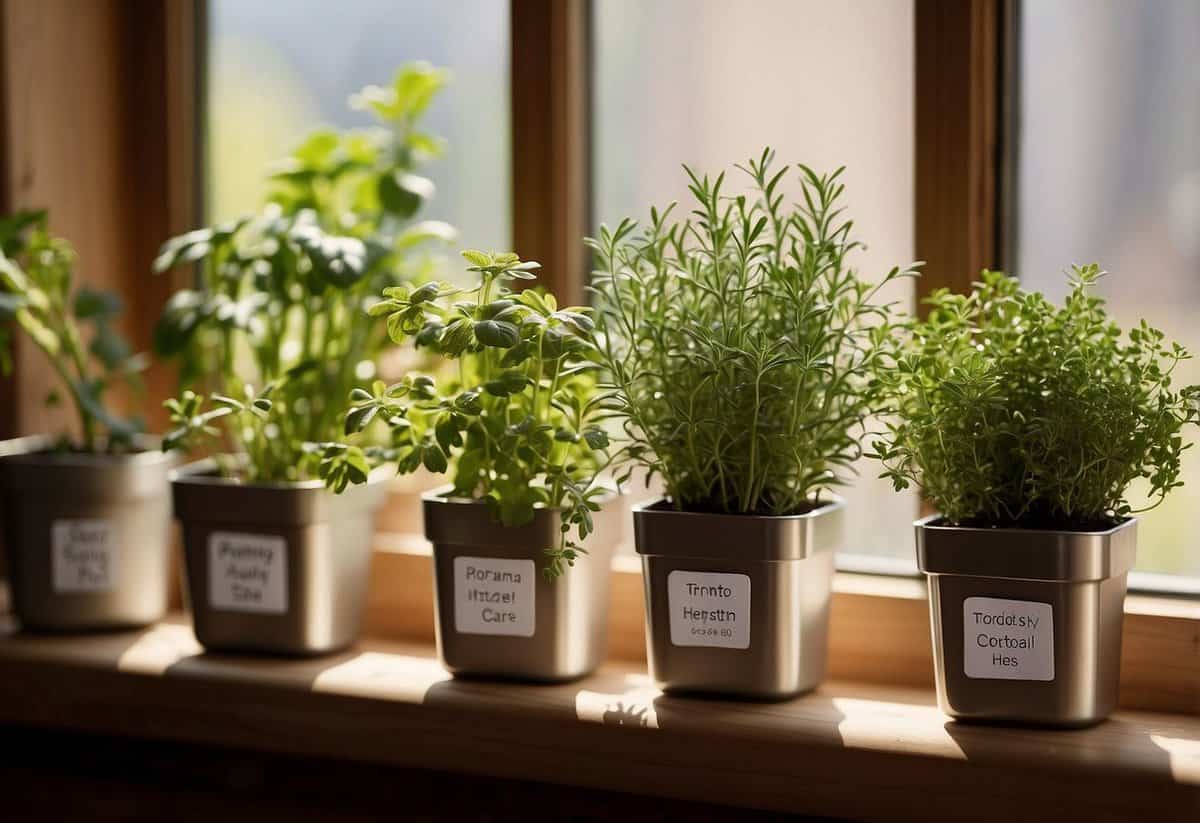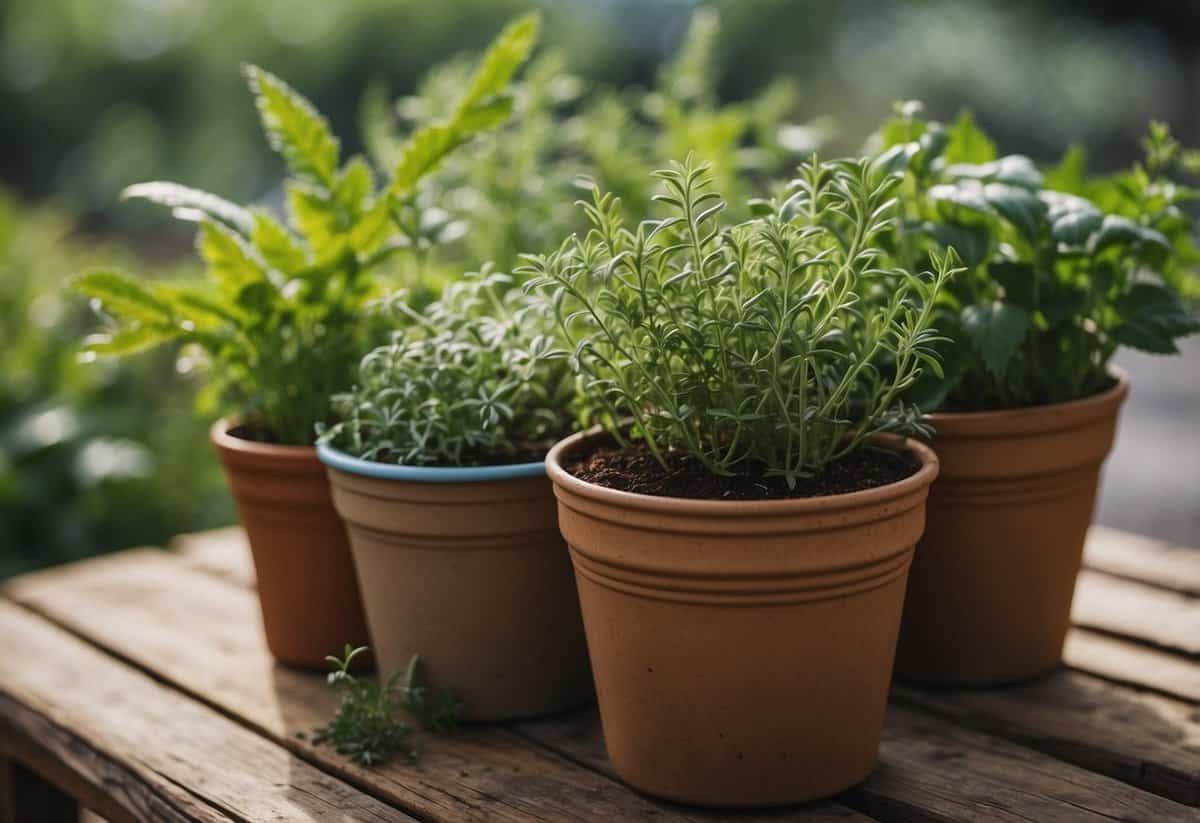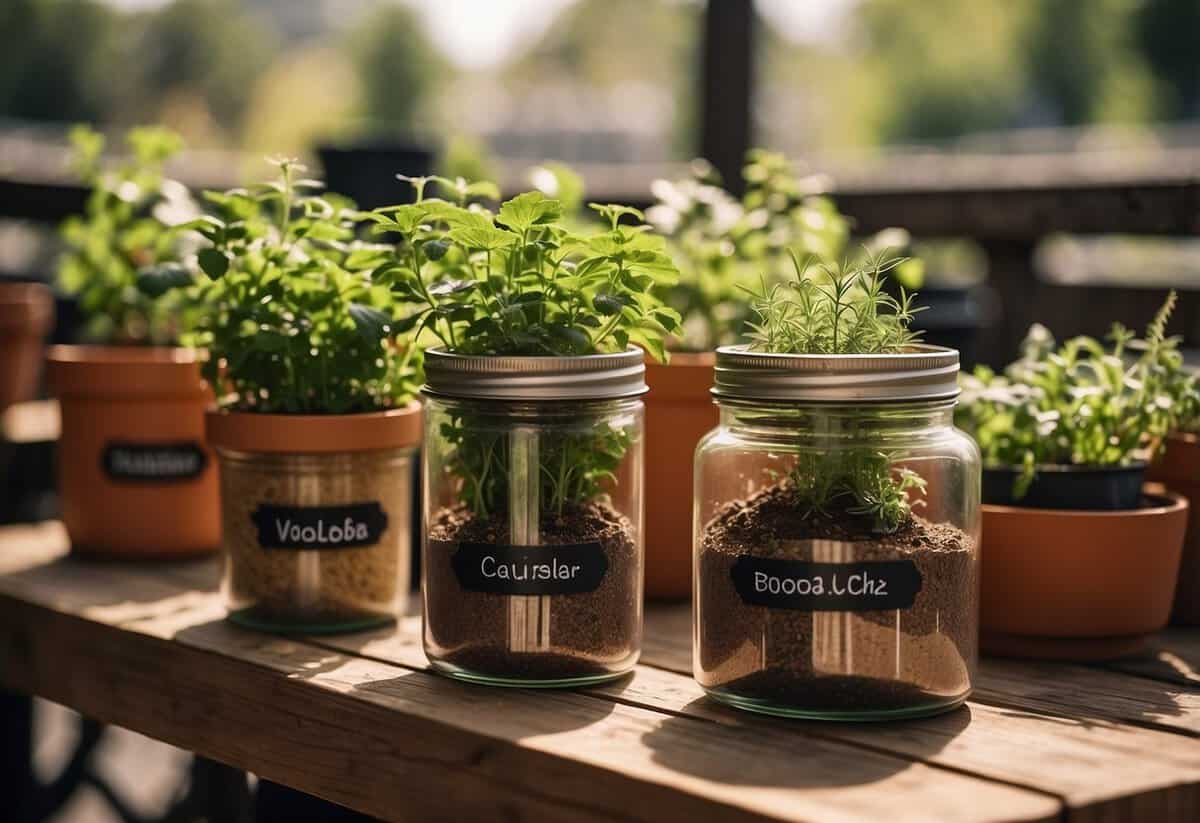Tips for Herb Container Garden: Simple Ways to Grow Fresh Herbs
Growing herbs in containers is a fantastic way to bring fresh flavors to your kitchen and brighten up your living space. Whether you have a spacious garden or a small balcony, container gardening allows you to cultivate a variety of herbs with ease. You can enjoy the convenience of having your favorite herbs just a few steps away.

Starting a container herb garden can be a rewarding and enjoyable hobby for both beginners and experienced gardeners. By selecting the right containers and providing proper care, you can ensure your herbs thrive season after season. Ready to get started? Let’s explore some helpful tips to grow lush, healthy herbs in pots.
1) Choose the Right Containers

Picking the right containers is key for a successful herb garden. Look for containers with good drainage to prevent your herbs’ roots from getting waterlogged.
Consider the size of the containers. Herbs like basil and parsley need more room than thyme or rosemary, so choose pots that can accommodate their growth.
The material of the containers also matters. Clay pots are great for better air circulation, while plastic pots retain moisture longer. Pick what works best for your herbs and your gardening habits.
2) Select the Best Soil Mix

Choosing the right soil mix is crucial for a thriving herb container garden. Not all potting mixes are the same. Look for a potting mix formulated specifically for containers.
A good option should have ingredients like perlite or vermiculite for drainage. You can find more about this mix on Get Busy Gardening.
Also, consider the pH levels. Herbs like parsley and sage prefer neutral to alkaline soil. For more pH tips, check Homes & Gardens.
Remember, well-draining soil is key to prevent waterlogging!
3) Plan for Proper Drainage

When starting your herb container garden, drainage is key. Poor drainage can drown your plants and lead to root rot.
Make sure your containers have drainage holes. Cover the holes with a coffee filter to keep soil from leaking out.
Use well-draining soil. Adding a bit of sand or gravel to the mix can help.
Consider placing crushed pottery pieces at the bottom of large pots. This can improve drainage and keep your herbs healthy.
By planning for proper drainage, you’re giving your herbs the best chance to thrive.
4) Consider Sunlight Exposure

Sunlight is crucial for healthy herb growth. Most herbs, like basil and rosemary, love the sun and need at least 6-8 hours of direct sunlight each day.
Place your containers in sunny spots on your balcony or windowsill. If you have limited sunlight indoors, consider using grow lights to supplement natural light.
Remember to rotate your pots occasionally. This helps ensure all sides of your plants get equal sun exposure, promoting even growth. Take note of which herbs prefer partial shade, such as mint, and place them accordingly.
5) Keep Your Herbs Close

When you keep your herbs close, you can easily snip fresh leaves right when you need them.
Place your herb containers near your kitchen for handy access while cooking. Make sure they get enough sunlight by positioning them on a sunny windowsill or balcony.
Having your herbs nearby also encourages regular watering and care, helping them thrive.
6) Water Consistently but Cautiously

Watering your herb container garden is crucial. Herbs need regular moisture, but too much water can harm them.
Always check the soil before watering. If the top inch of soil feels dry, it’s time to water.
Ensure your containers have drainage holes to prevent waterlogging. Using a saucer under the pot can help collect excess water.
7) Use Liquid Fertilizer

Liquid fertilizer is great for herb container gardens. It provides an instant boost of nutrients directly to the plants. Mix the recommended amount with water and pour it into the soil. This ensures your herbs continue to grow well.
For an extra boost, you can also use a spray bottle to apply the liquid fertilizer to the leaves. This method is called foliar feeding and can be very effective.
8) Trim Regularly for Healthy Growth

Trimming your herbs often keeps them healthy and happy. When you trim, it encourages the plants to grow bushier and fuller.
Remove any dead leaves or stems promptly. This helps prevent diseases and pests from affecting your herbs.
Don’t forget to use clean, sharp scissors when cutting. This ensures a clean cut and reduces stress on the plant.
9) Rotate Plants Occasionally

Rotating your herbs every few weeks can ensure they receive even sunlight. This helps prevent one side from becoming too leggy.
Check the light and temperature in different parts of your home. Move pots around to find the best spots.
Regular rotation can also help you notice any pest problems early. Keep an eye on your plants’ growth and adjust their positions as needed.
10) Watch for Pests and Diseases

Keep an eye out for common pests in your herb container garden. Aphids, spider mites, and whiteflies can be troublesome. Regularly check the undersides of leaves.
Watering your herbs correctly helps prevent diseases. Avoid splashing water on the foliage to reduce the risk of fungal infections.
Consider using organic pest control products. They are safer for the environment and effective in managing garden pests. For more information, visit tips for keeping your container garden pest-free.
Choosing The Right Containers

Choosing the right containers for your herb garden is essential for healthy growth and aesthetics. Key factors include size, material, and drainage to ensure your herbs thrive.
Size And Material Considerations
When picking containers, size and material are critical. Herb roots need space to grow, so choose pots that are at least 6-12 inches deep. Larger containers allow for better root expansion and moisture retention.
Materials like terracotta, plastic, and ceramic all have their pros and cons. Terracotta breathes well but can dry out quickly. Plastic is lightweight and retains moisture but may heat up in direct sun. Ceramic is sturdy and retains moisture well but can be heavy.
Think about where you’ll place the containers. For example, you need lighter pots for a balcony but sturdier ones for a windy spot.
Drainage Needs
Proper drainage is vital for healthy herbs. Containers must have drainage holes to prevent water from stagnating, which can cause root rot. Without sufficient drainage, herbs can suffer from overwatering issues.
To improve drainage, you can add a layer of small stones or gravel at the bottom of the pots. This creates space for excess water to escape. You can also use potting soil specifically designed for containers, which tends to drain better than garden soil.
Remember to check the drainage regularly. If you notice water pooling, adjust the drainage to keep your herbs happy and healthy.
Using these tips, you’ll be well-equipped to choose the perfect containers for your herb garden. For more information, check out this comprehensive guide to container herb garden .
Soil And Fertilizer Basics

Getting the right soil and understanding how to fertilize your herbs will make a huge difference in your container garden’s success. You’ll want to focus on soil mix ingredients, and the best practices for feeding your plants.
Selecting The Best Soil Mix
Choosing the right soil mix is crucial. For herbs, you need a well-draining mix. A popular choice is combining peat moss or coconut coir, perlite or vermiculite, and compost in equal parts. This mix ensures proper aeration and moisture retention.
Don’t forget to add an organic mycorrhizal fungi source. These beneficial microbes help your herbs absorb nutrients more effectively, resulting in healthier, more robust plants. You can find these in specialized garden centers or add them directly when planting.
Fertilization Tips For Healthy Growth
Fertilizing herbs correctly keeps them thriving. A balanced, water-soluble fertilizer works well. For instance, using a 10-10-10 or 5-10-5 mix provides a good balance of nitrogen, phosphorus, and potassium.
Apply this every 4-6 weeks during the growing season. Be cautious not to over-fertilize, as this can cause excessive leaf growth but fewer aromatic oils, which you want in herbs. Consider using organic fertilizers like compost tea for a gentler boost. Always follow the manufacturer’s instructions to avoid burning your plants.
Watering Your Herb Garden

Watering your herb garden properly is crucial for healthy growth. It’s essential to establish a consistent watering routine and avoid over-watering, which can damage your plants.
Establishing A Watering Routine
Create a routine by checking the soil moisture daily. Stick your finger into the soil about an inch deep. If it feels dry, it’s time to water. Most herbs need watering every two to three days. Basil and parsley, which enjoy consistent moisture, may need more frequent watering.
Tip: Morning is the best time to water herbs. This allows the soil to dry slightly by evening, preventing fungal diseases. Keep an eye on the weather; plants will need more water during hot, dry periods.
Avoiding Over-Watering
Over-watering is a common mistake. It can lead to root rot and other problems. Make sure your containers have drainage holes. After watering, let excess water drain out completely. Use a saucer under pots to catch water and avoid soaking your plants.
Different herbs have different needs. For example, rosemary and thyme prefer drier conditions, while basil and parsley like more moisture. Adjust your watering schedule based on the types of herbs you’re growing. Always recheck soil moisture before adding more water.
By following these steps, your herb garden will thrive without the risk of over-watering.







